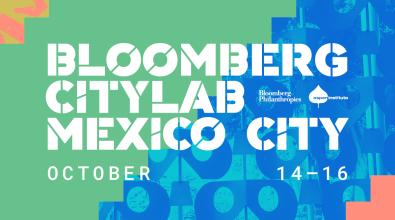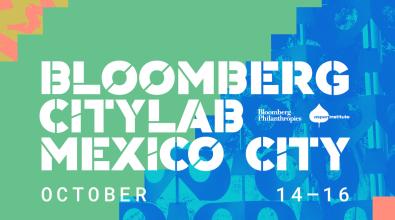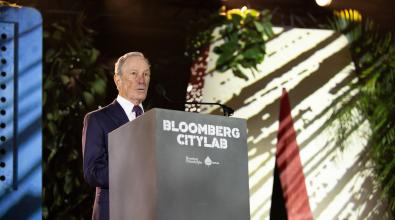When innovation is everyone’s job
City leaders responded to the pandemic by innovating like never before. To keep up the momentum, they'll need to keep expanding the number of city employees who see themselves as innovators. Here are five strategies they can use to do just that.

(Shutterstock/SurfsUp)
This week marks a full year since city lockdowns began proliferating to stop the spread of COVID-19. And that means this is also the one-year anniversary of the start of one of the most prolific periods of urban innovation in history.
When seniors and others at risk couldn’t go out to buy food or medicines, city leaders mobilized volunteers to build pop-up delivery services. When laid-off workers couldn’t pay rent, cities passed eviction moratoriums and created housing-assistance funds. City leaders launched COVID testing centers, converted hotels into homeless shelters, offered small-business loans, built robust data portals, provided broadband to low-income families, rounded up PPE for essential workers, enabled “streateries,” and much more—all while juggling their own overnight shifts to remote work and collapsing budgets.
In city halls around the world, it was a moment when everyone from the mayor to the maintenance crew stepped up to do practically anything necessary to help. Suddenly, it wasn’t just chief innovation officers and people with similar roles thinking about how to work in more collaborative and experimental ways. Innovation became the job of every person working in city government.
Consolidating and growing from the lessons of the past year was a big focus of last week’s CityLab summit. And it was the driving force behind a special part of the program hosted by Bloomberg Philanthropies known as the Chief Innovators Studio.
This annual gathering of chief innovation officers from cities around the world is always a barometer of the current state of the public-sector innovation movement and a window into where it’s headed. In a sign of the “all hands on deck” times, it wasn’t just people with innovation in their title who attended but also city chief officers for equity, budget, sustainability, data, and digital transformation.
“Here, we're bringing together the most important city officials that surround the mayor,” said Mike Bloomberg, the 108th Mayor of New York City and founder of Bloomberg Philanthropies, while opening the virtual gathering. “As your cities tackle the pandemic and the economic fallout and racial injustice and the climate crisis, you are the problem solvers dealing with each of these major challenges all at once.”
[Get the latest innovation news from Bloomberg Cities! Subscribe to SPARK.]
“In the past year, not one of you had the luxury of saying ‘innovation isn’t my job,’” added Stephanie Wade of Bloomberg Philanthropies. “We know that in order to have lasting impact, you need to keep the innovation momentum going. That means continuing to use innovation tools to create new ideas that tackle your toughest challenges. That also means growing the number of people in city hall who see themselves as innovators, especially frontline staff who are so often the face of city hall in your community.”
To explore how to do that, Harvard Business School Professor Ryan Buell shared his research from the private and public sectors on how to elevate employees in their work. That’s a necessary step, he said, to providing better services that can build more trusting relationships with residents.
“It’s a perfect time to be having this conversation,” Buell said. “Because this is a period where we’re reinventing ourselves due to new and unprecedented constraints we’ve never had to face before. All stakeholders understand that, and they’re willing to negotiate on the terms of engagement. So this is an opportunity for us to experiment and try lots of things that might change the dynamics and allow our cities to emerge stronger on the other side of the pandemic than they were going into it.”
To that end, Buell offered five ideas that government leaders at all levels can use to create conditions for employees to thrive and create more value for residents.
1. Shift the boundaries of the job. If you walked into a grocery store a century ago, Buell said, you would be met by clerks who hand picked all the items in your order from behind a counter. Today, most of that work has shifted to customers, freeing grocery workers to focus on other roles. Similarly, Buell said, city leaders can look for ways to leverage technology, partners, or residents themselves to shift the boundaries of employees’ jobs. “When we relax some of the assumptions that have always driven the way we engage with our residents, as the pandemic has forced us to, it’s an opportunity for learning and innovating,” Buell said.
2. Put employees in a position to make a personal connection. The best customer experiences are personal, where customers feel their needs are being tended to, Buell said. The worst are the opposite: impersonal and unresponsive. Even in a time of social distancing, local leaders can put employees in a position to create positive experiences for residents experiencing crisis by making sure there are ways—by phone, email, text message, or other platforms—to respond to residents’ needs and unexpected challenges.
“If we give residents the opportunity to access people in those moments when they’re feeling anxious,” Buell said, “it can start to change the dynamics of the interaction in a meaningful way.”
[Read: How better digital services can build trust in local government]
3. Help residents be more helpful. Buell cited the example of an eye hospital in India as something city leaders can learn from. To serve more patients who can’t afford to pay for care, the hospital experimented with moving away from traditional one-on-one appointments with doctors to a group-appointment model. It turned out the shared appointments led patients to help each other by asking more questions and getting more answers. They reported higher rates of satisfaction with their care and became more compliant with their prescriptions. Cities can look for other ways to encourage residents to help one another. “Residents are experts in their communities because they are of the community,” Buell said. “They can be contributors to help us change together in a way that reflects what the community needs.”
4. Show residents the work. Like many cities, Boston has a 311 smartphone app where residents can report a pothole that needs to be filled, for example, or a snowy sidewalk that needs shoveling. When the city added a feature that sent users a photo of the completed work, resident use of the app went way up. Buell called this an example of “operational transparency” at work, and said it can be a powerful way to close the loop with residents. “When customers can see the hidden work that’s going on behind the scenes to serve them,” he said, “they appreciate the effort and value the interaction more.”
5. Show employees their impact. A similar principle works with employees, particularly in local government, where serving the public is the purpose of the work as well as its reward. Whether they’re working in city hall or teleworking from home, the positive impact of employees’ work is not always evident in the day-to-day grind. So it’s important to find ways to make it visible. “What we’ve come to understand is that when employees can see the impact of their work, when they can see the customer they’re helping, the work feels more meaningful and appreciated,” Buell said. “They’re more satisfied with their work, and they’re willing to exert more at work.”
“If you can do these five things, it not only elevates employees by giving them more leverage and setting the conditions for them to thrive in the delivery of outstanding service to residents,” Buell said. “But it’s also a pathway to engendering higher levels of public trust. There’s never been a better time than the present for us to experiment with new ways of engaging our residents and new ways of engaging our employees.”


